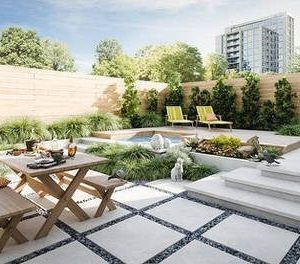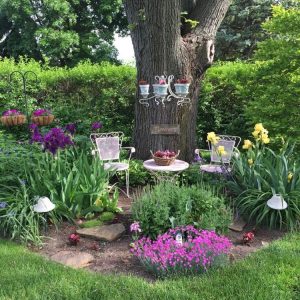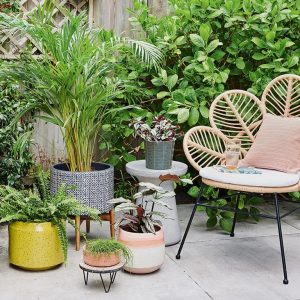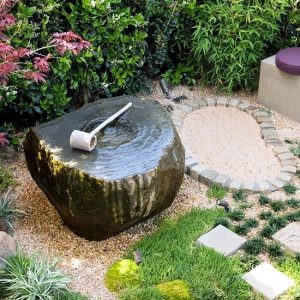A wilted plant is a stressed plant resulting in flowers and trees that won’t grow well and are less able to fend off pests and diseases. Figuring out garden watering in the right amount and frequency can be a little tricky since it depends on a number of environmental influences, including the season and weather conditions, as well as the types of plants you’re growing. Here are a few basics you need to know to have the healthiest, best-hydrated landscape while using every last drop of water more efficiently.
:strip_icc():format(webp)/watering-garden-sunlight-101675581-cc94ea43403e4fe79865526c97bf589a.jpg)
The time of year and precipitation (or lack thereof) impact how much garden watering is needed. Plants grow less quickly, if at all, during the cooler months, so they don’t require as much moisture to support their stems and leaves. But even cold-hardy trees, shrubs, and perennials, dormant in winter, still need hydration. Most areas of the country experience some drought, so your job is to ease your plants through those dry spells.
A wilted plant is a stressed plant.
Because of more plentiful precipitation in the spring, Mother Nature will take care of a lot of the garden watering. Be aware of how much rainfall you’re getting. You may need to supplement if you get less than one inch per week.
As the weather heats up and droughts occur, you’ll need to step in with more watering. When temperatures go above 85°F, you can expect to water your plants every day to keep them from wilting.
The end of the growing season usually won’t require as much watering, since temperatures start cooling and precipitation often increases. Also, most hardy plants will start slowing down their growth and losing leaves in preparation for winter, so they need less hydrating. Water your plants about two times per week when temperatures are above 40°F and snow hasn’t fallen yet.
Watering is only necessary before the frost hits and your hardy plants have gone dormant for the winter. Until then, when temperatures are above 40°F, water your plants two to three times per week. Once there’s snow on the ground, you can relax until spring rolls around.
Keeping track of your area’s precipitation is easy with a good rain gauge. Place it away from trees or overhanging structures to get the most accurate reading.
:strip_icc():format(webp)/drip-irrigation-system-lettuce-bf7a920c-906d5a06522742b2af962d2565b190d7.jpg)
You can water your garden with a watering can, hose, sprinklers, or irrigation system. It doesn’t matter much to your plants; it’s more about what’s most convenient and affordable. For example, a watering can or a hose works well enough for a small garden or just a few plants. But if you have garden watering to do for many plants over a large area, you may want to consider investing in drip irrigation or a sprinkler system on a timer, which can aid in conserving water.
When using a watering can (like this Better Homes & Gardens version, $20, Walmart), keep the water temperature in mind. You’re not alone in disliking cold showers or baths—many plants hate cold water. Garden watering should be done with cool or tepid water, especially for seedlings and young plants, since they can less tolerate temperature shock. You’ll also want to avoid the other extreme, too-hot water. This can happen when a hose or watering can (especially a metal one) sits in the sun. It’s best to first run the hose over the pavement until you feel the water cool. Empty and refill overheated watering cans before using.
If you’re watering plants from overhead, try not to get the leaves wet. It also helps to start early enough in the day for the foliage to dry completely before nightfall, discouraging foliar diseases.
:strip_icc():format(webp)/Arbor-Day-Trees-9a3813d72e454f19bd060eac37bcd6f8.jpg)
It usually takes a year after planting for most perennials, shrubs, and trees to become fully established, which means they’ve had a chance to develop a strong root system. During their first season in your garden, make sure your new plants never wilt or completely dry out. This will help them concentrate more energy on growing healthy roots rather than on damage control when they’re drought-stressed.
New annuals and vegetable transplants also need evenly and constantly moist soil, but not soggy, at least for the first two weeks. When planting small peat pots directly into the soil (a practice often used with plants that don’t tolerate root disturbance well), be careful that no part of the pot protrudes above the soil. If it does, the dry peat will act as a wick, pulling water from the soil and letting it evaporate into the air.
:strip_icc():format(webp)/walmart-lanterns-BHG_Mars_05032022_AM2687-ffb10674dcb640b2841901096595290d.jpg)
Buy it: Better Homes & Gardens Green Ceramic Planter (from $13, Walmart)
Plants in containers can dry out faster than plants in the ground, as the soil in pots tends to retain less moisture. The ideal time to water container plants is early morning or early evening. This gives the plants time to absorb water before the hottest part of the day. On hot summer days, outdoor potted plants may need to be watered twice daily. If the soil around the plant is dry or the plant shows signs of brown, shriveled leaves, it’s time to water. Look for planters with a drainage hole at the bottom so the container doesn’t retain too much water.
Buy it: Better Homes & Gardens ceramic planter (from $17, Walmart)
Some plants are more drought-tolerant than others (succulents are among the least thirsty plants), so they can get by with less water. But in general, you can think of plants as living straws that suck water out of the ground and release it into the air. This process speeds up during hot, sunny weather, especially when there’s a noticeable breeze or wind, which causes water to evaporate more quickly. Without enough garden watering for roots to send to leaves and stems, your plants will wilt and eventually die. The trick is to make sure your plants, especially new ones still getting established, always have enough moisture, but not so much that they drown (roots need to breathe, too).
And no, just wetting the surface isn’t enough. Apply water thoroughly, letting it soak into the ground down to the roots. Water can take a little time to penetrate deep into your soil, so it’s best to add moisture slowly, using low pressure, rather than going for a quick blast from the hose (the force of which can damage more delicate plants).
If you see puddles forming immediately, or runoff, you’re adding water faster than the ground can absorb it. Try moving on to another area, then returning five to ten minutes later to add a little more water at a more gentle rate. This will give the moisture time to trickle into the earth.
Of course, it’s just as possible to overwater your plants. If you’re concerned about that, remember that after garden watering, most plants can recover from wilting, but if the roots start rotting from too much moisture, they often can’t be saved. Add plenty of compost to your soil to improve drainage. This will prevent overwatering from drowning the roots.







